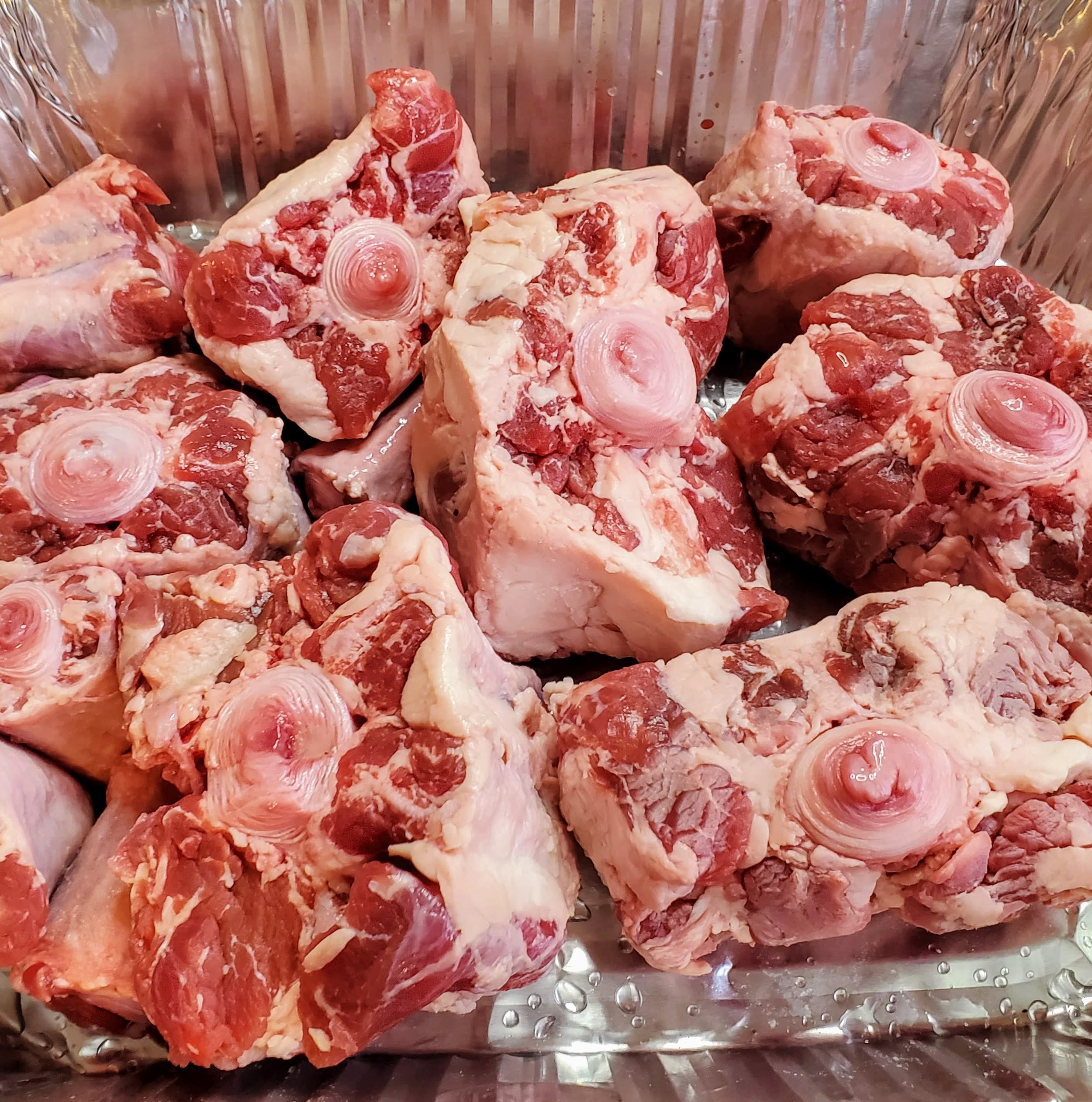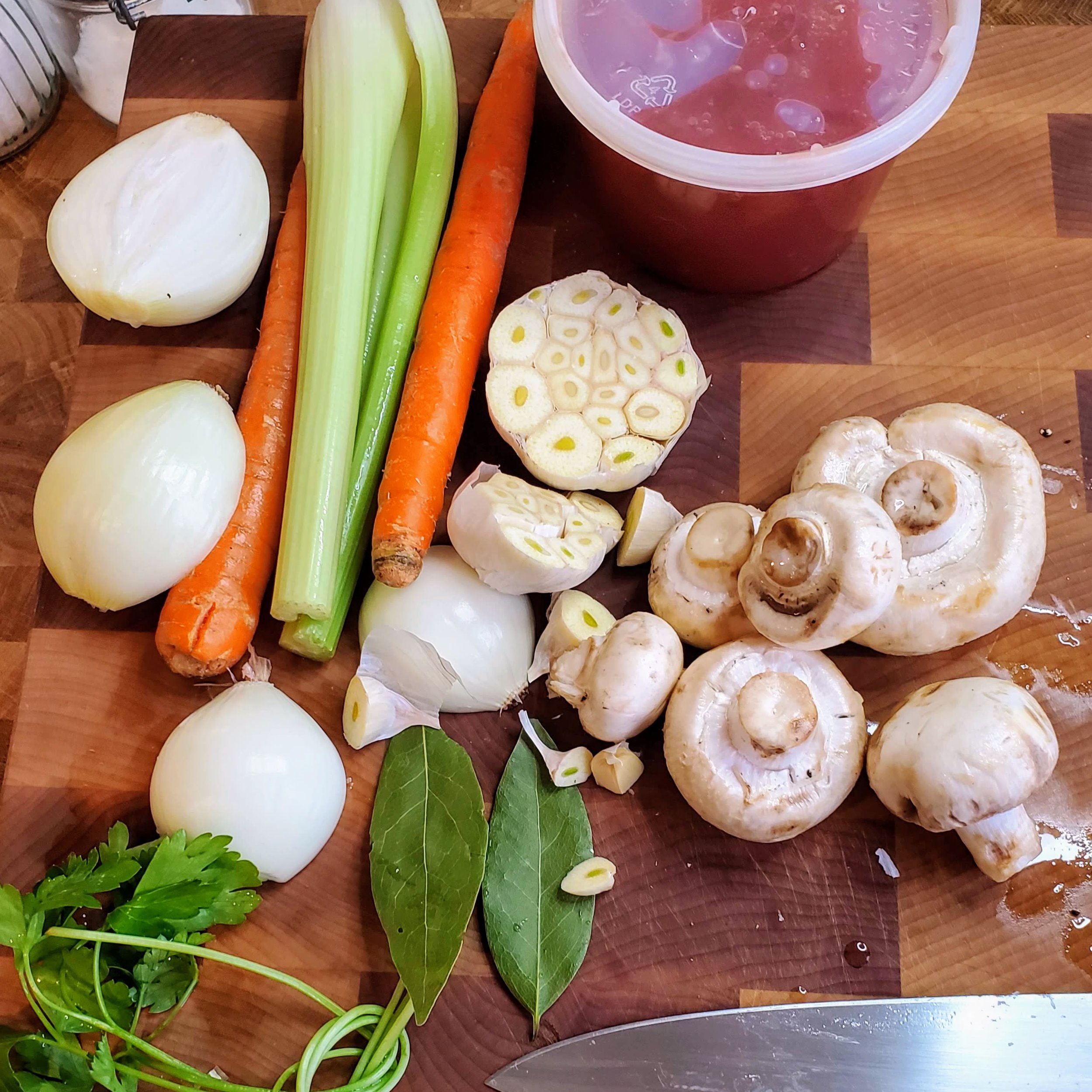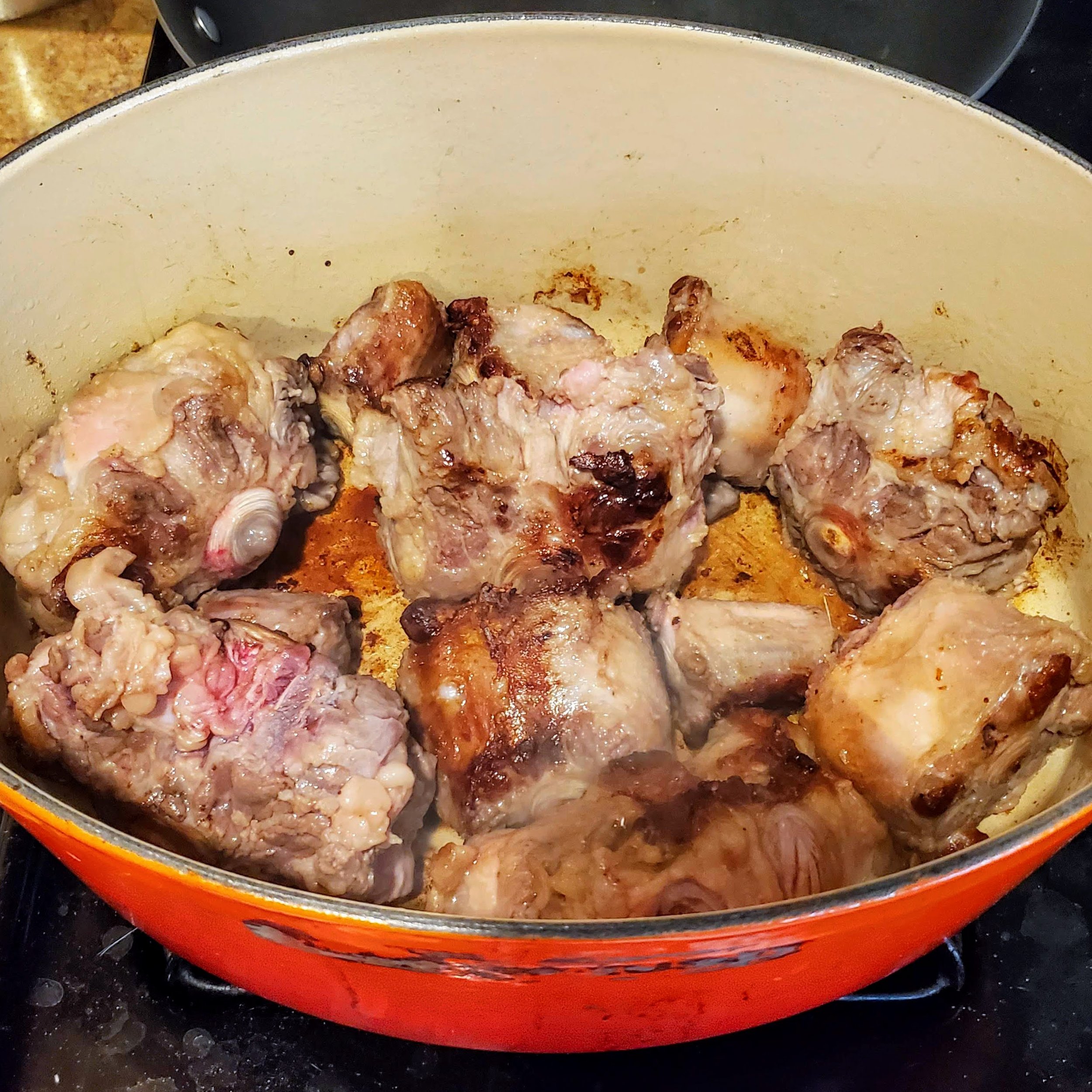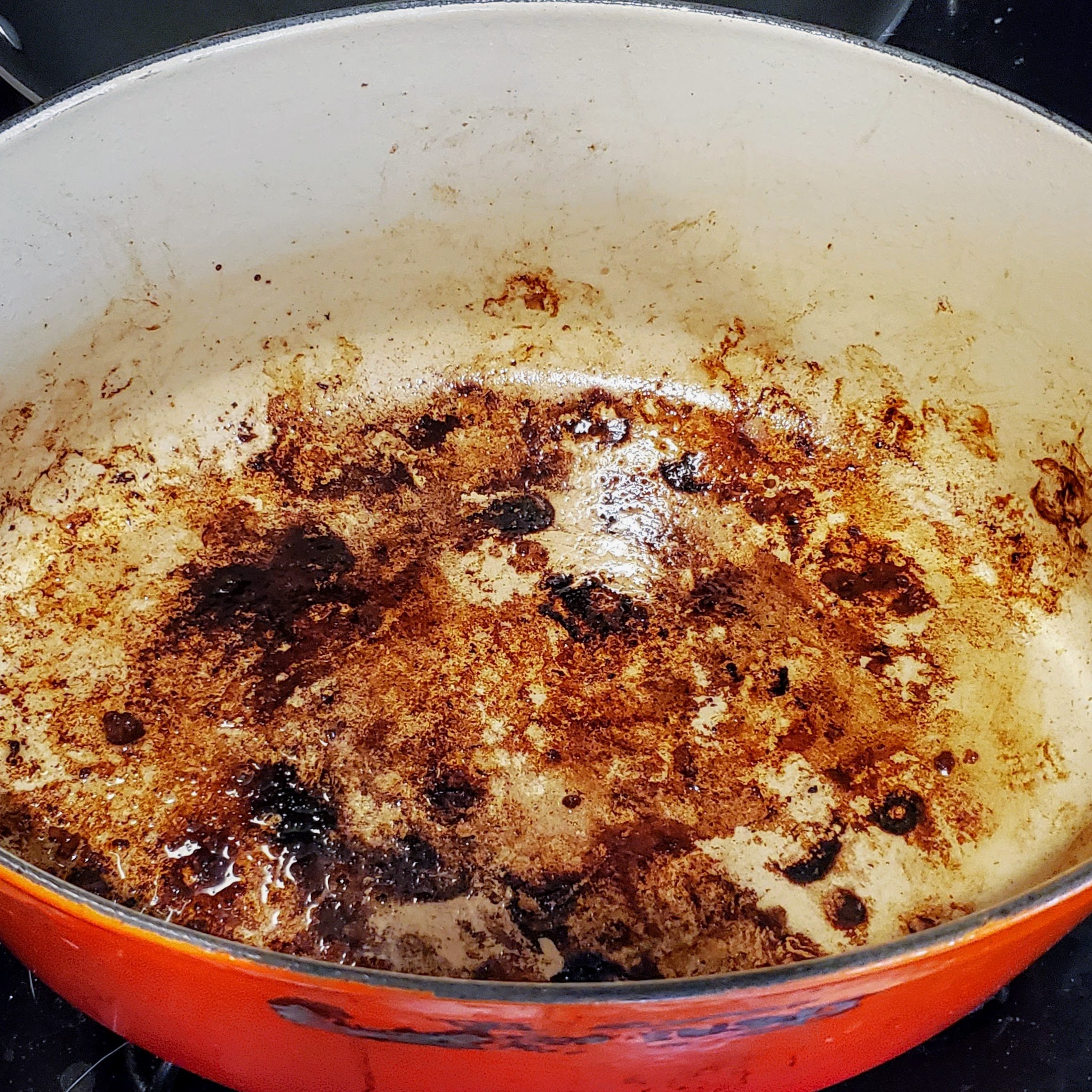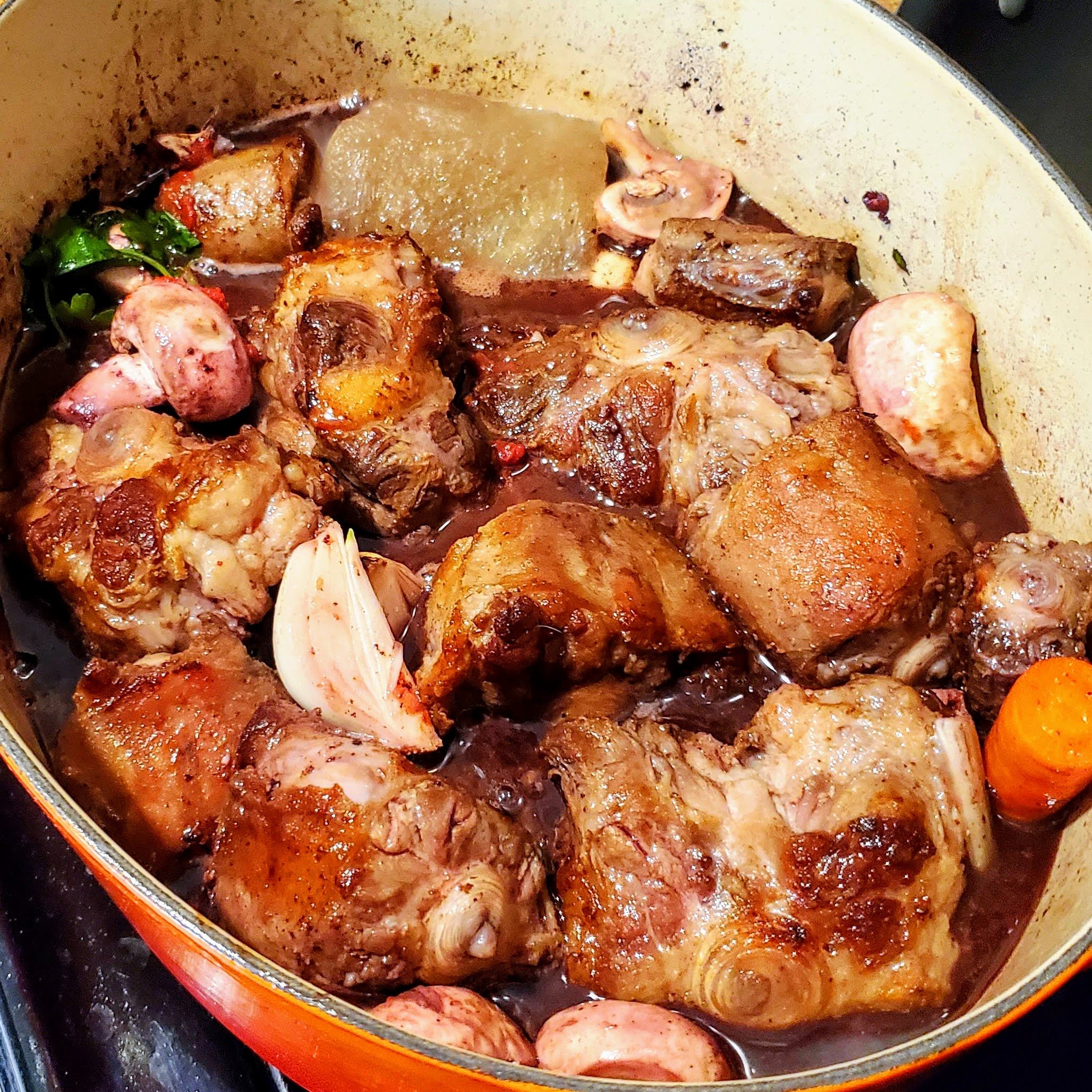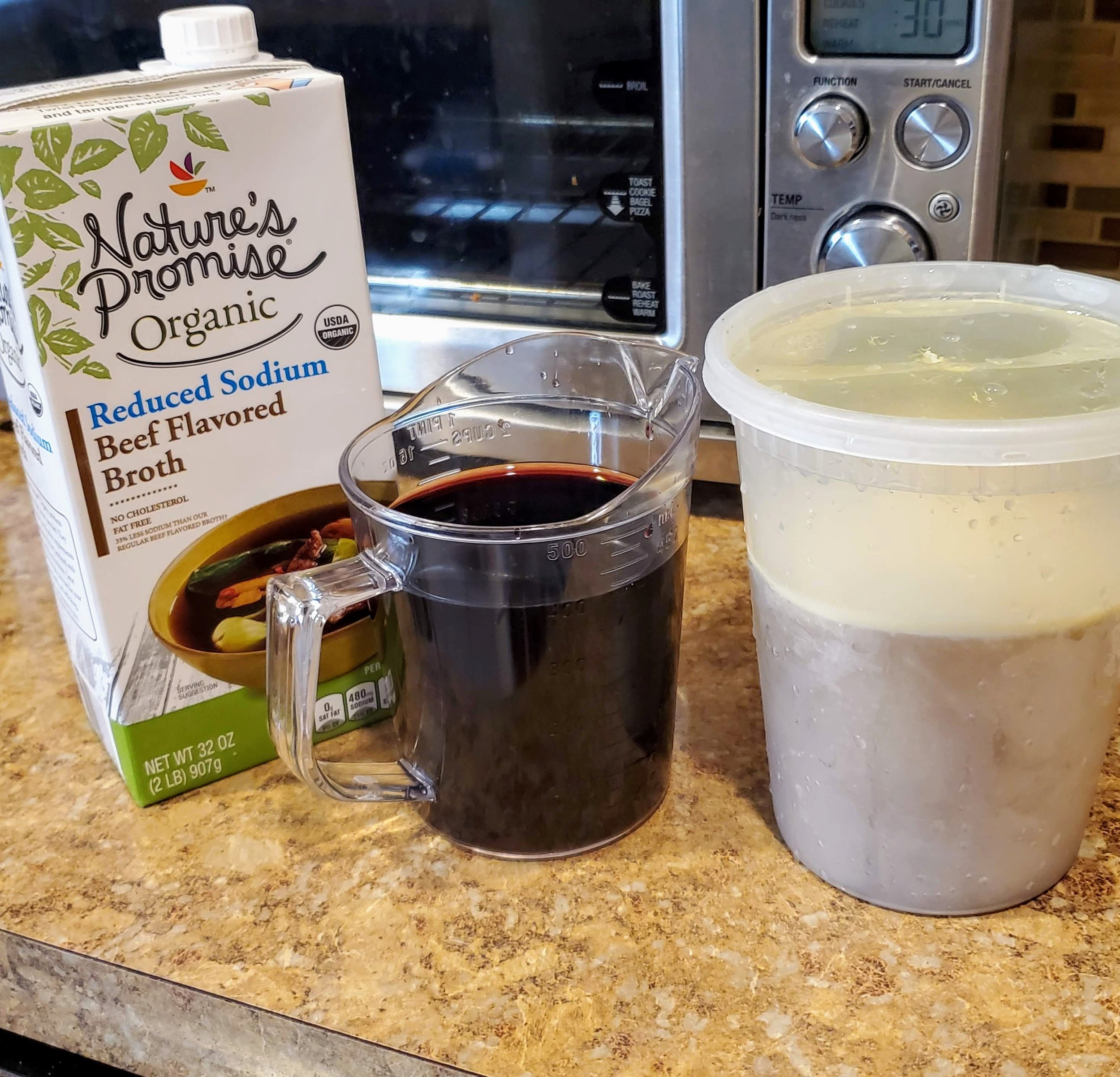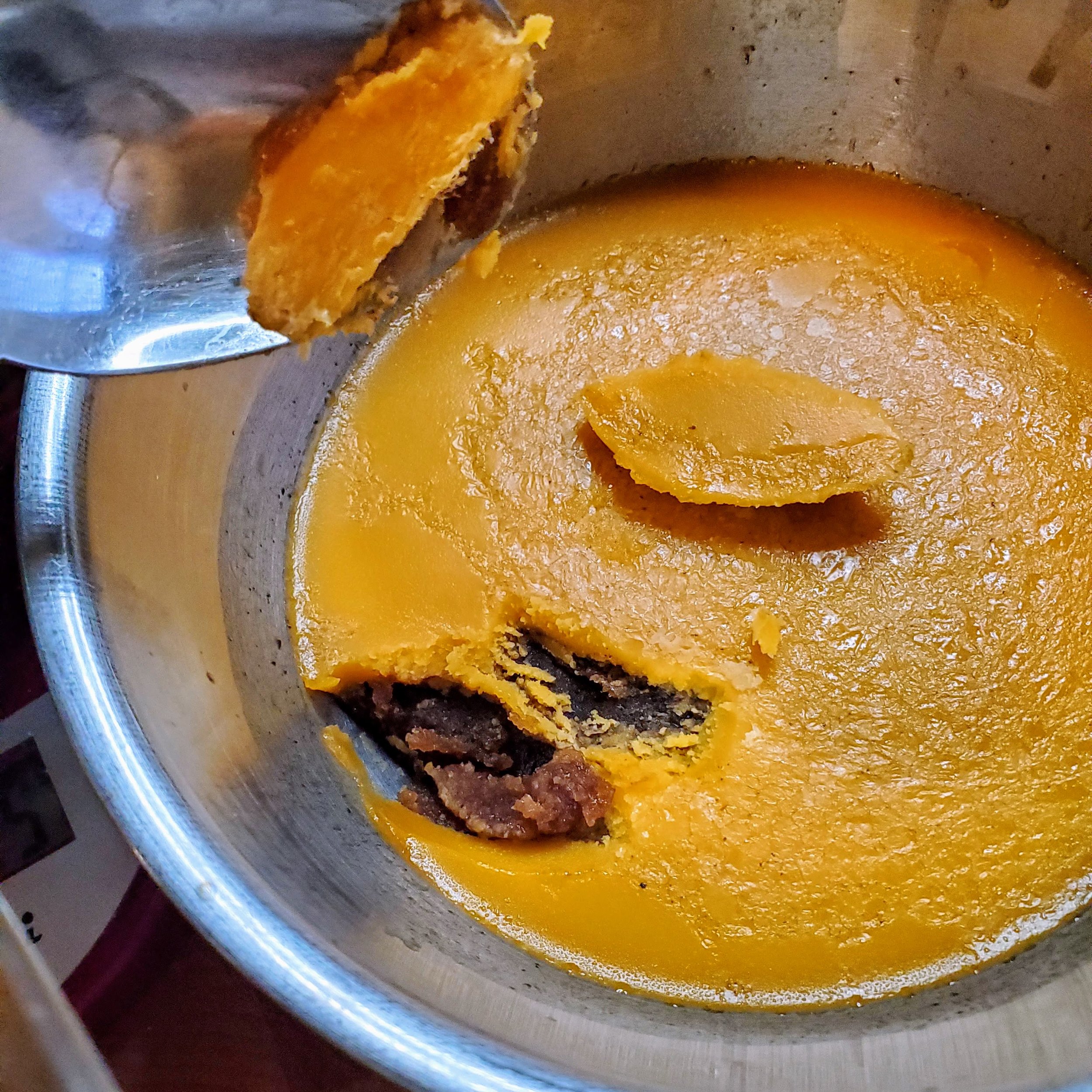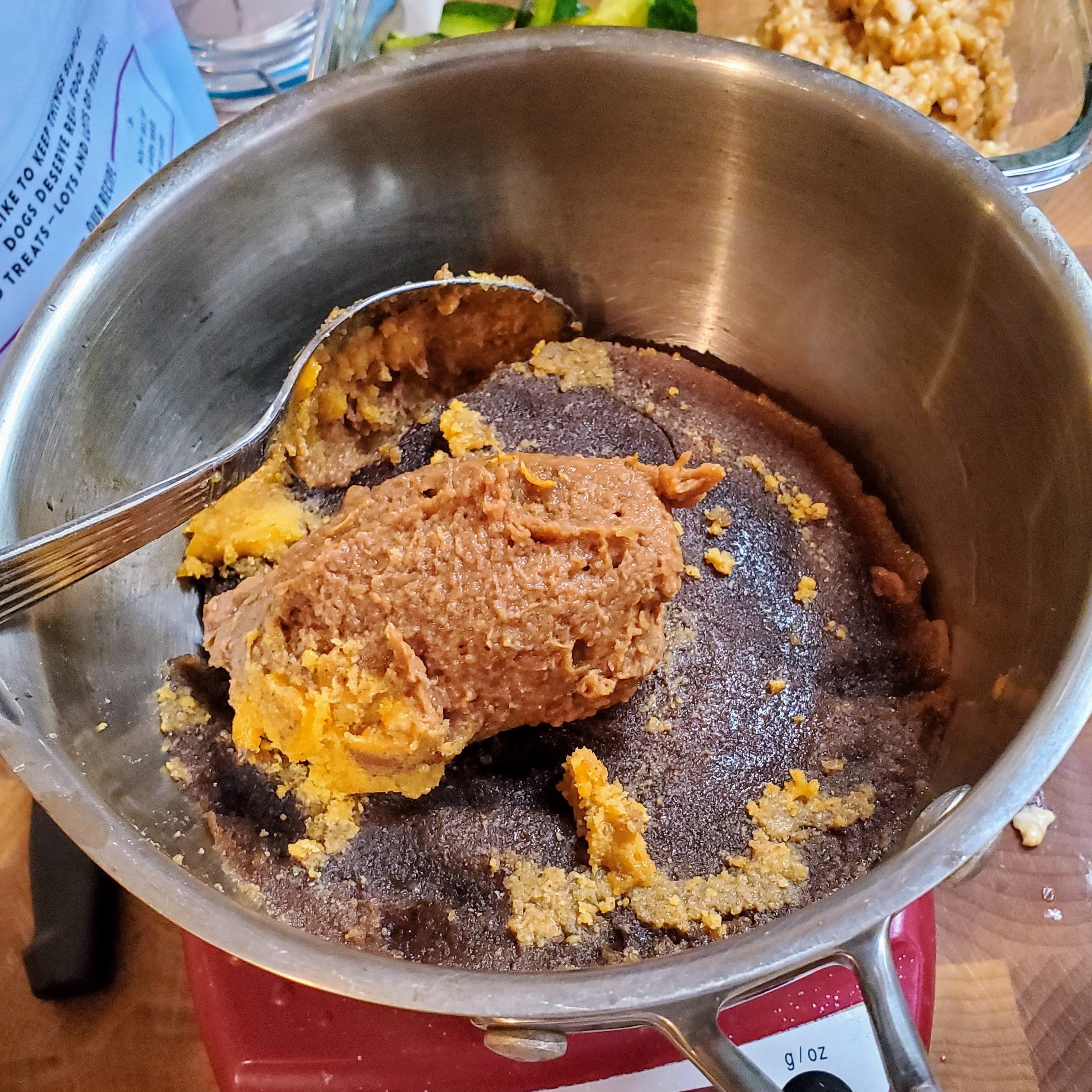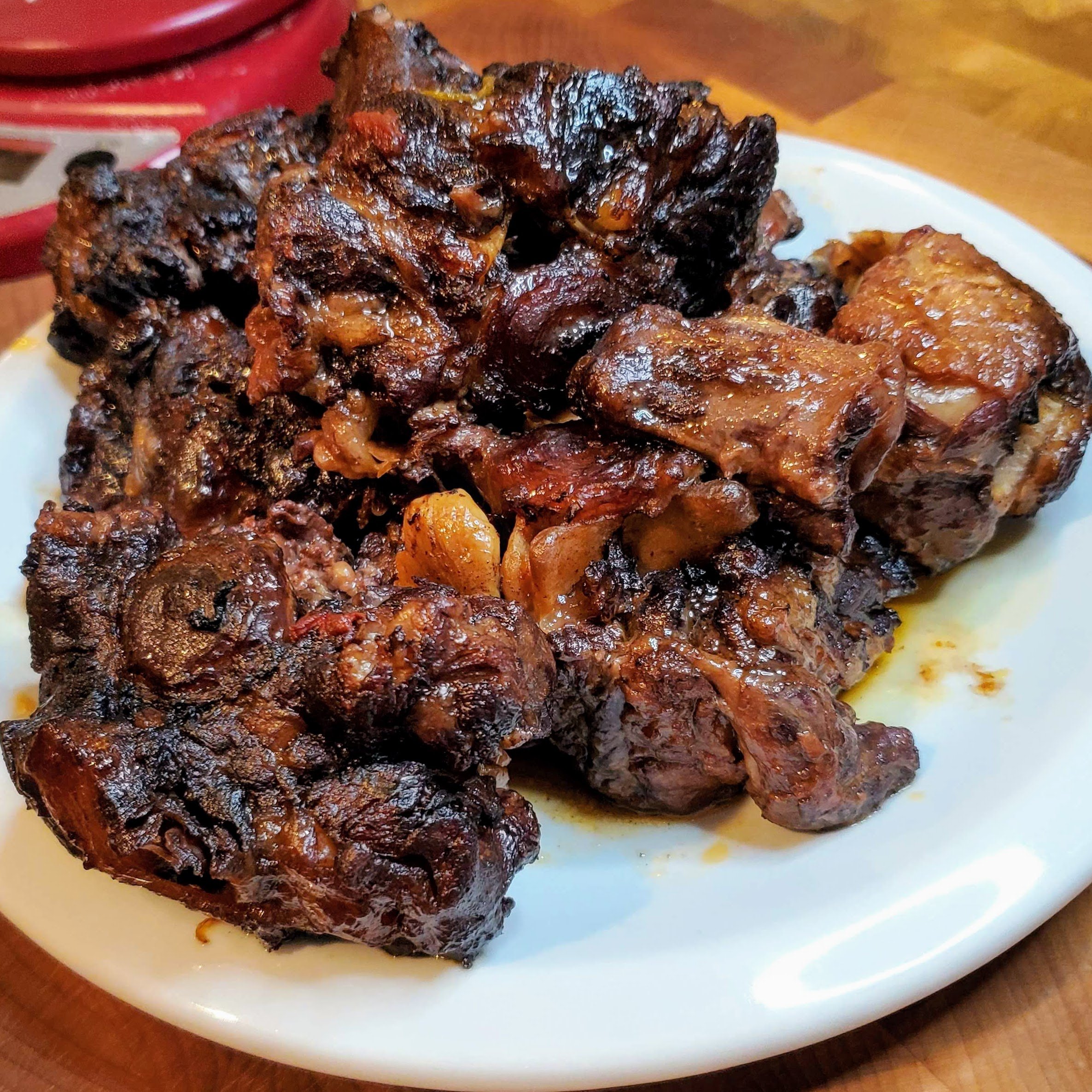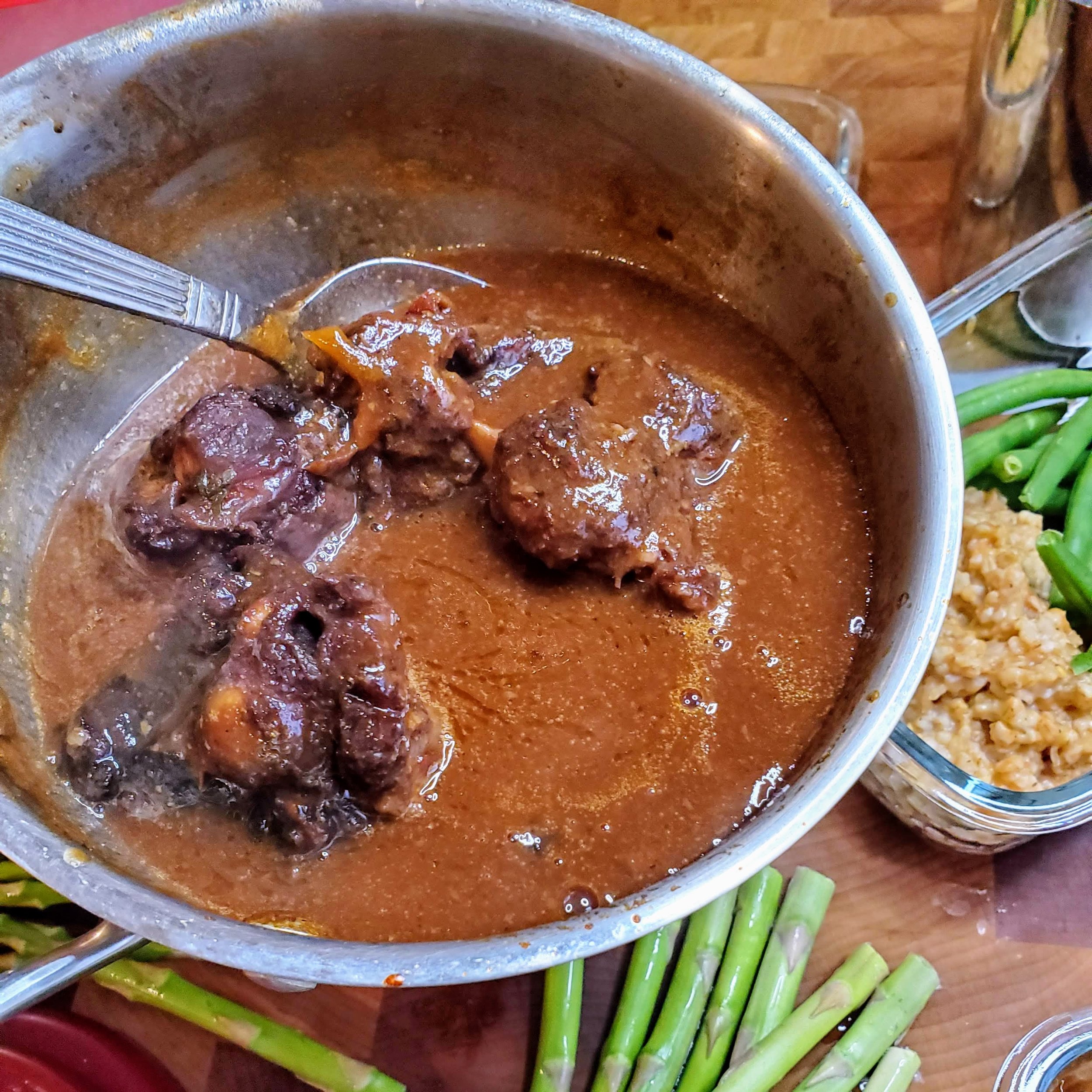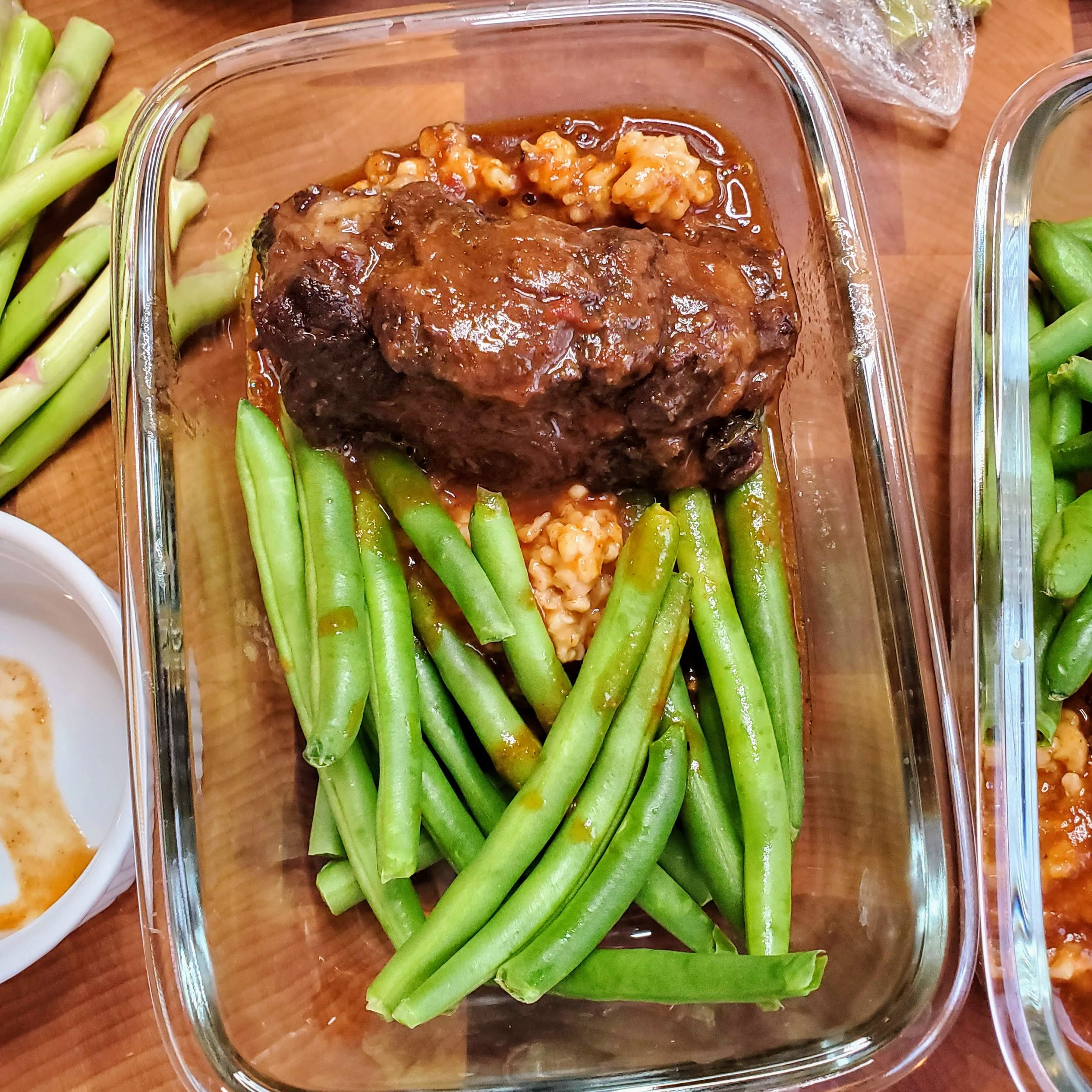Red Wine Braised Oxtail
With the cold weather back in full force and us entering our third year of a global pandemic, people are understandably really into David Chang’s galbi-jjim/braised short rib again.
Well it’s a new January and I’ve got yet another delicious beef braise to share! Zuni Cafe’s oxtail braised in red wine.
Noah’s had the Zuni Cafe Cookbook long before he met me, and what it lacks in glossy photos and fun family anecdotes, it more than makes up for in actual detailed instructions on how to properly execute delicious dishes. This is a book you are supposed to cook from, not just flip through! Highly recommend.
We don’t make this one often, but every time I see good quality oxtail at H-Mart or Costco I am tempted to shell out $$$$ to revisit this dish. If you splurge on oxtails you might as well go the extra mile and treat it right by making this braise. As a project, it’s a medium amount of fussy, but mostly in terms of planning ahead. You won’t be able to eat it until the 4th or 5th day.
Day 1: Trim oxtail, season with salt, and marinate in fridge for 2-3 days.
Day 3: Cook braise, cool braise & sauce.
Day 4: Eating day! Peel off solidified fat, finish sauce, reheat meat, and serve!
You could probably start day 3 early and eat it by the end of the day, but it’s a tight squeeze. Would not recommend, especially because smelling it all day also desensitizes you to the flavors.
Zuni Cafe’s Red Wine Braised Oxtail
Trim excess fat off, pat dry, and season generously with salt:
4 lbs oxtail
Put on a tray in one layer, cover it loosely, and let it hang out in the fridge for 2-3 days.
In a 6qt Dutch oven, sear all sides of the oxtail.
Do this in batches if necessary. Be careful not to burn the fond.
Start with one of the "cylindrical” sides of your pieces to render out fat, so that the other sides brown more easily.
Do as many sides as you can without burning everything.
Remove the meat, wipe out most of the fat, and deglaze with:
1.75 cup red wine (something bold like a Cabernet Sauvignon)
Scrape up all the fond, and reduce the wine by 1/2.
To reduced wine, add:
2 bay leaves
1 head garlic, bisected
1 sprig parsley
1 sprig thyme
1 large carrot, roughly chunked
3 oz (~2 ribs) celery, roughly chunked
1 large onion, quartered
1 cup canned tomatoes
Return the meat to the pot and add:
3-4 cups homemade stock, enough to cover everything about 1/3 of the way up
The stock should be something gelatinous and rich (solid when cold) OR apparently the alternative is boxed chicken stock and a pig hoof to make up for the gelatin
Bring liquid to a boil, put the lid on tightly, and transfer to a 300F oven.
Braise for 2.5-4 hours, or until fork tender.
Check at 2.5 hours, and cook the rest of the way with the lid slightly ajar.
My oven must’ve been a bit high? At the 2.5 hr mark mine was done and pretty reduced, but it took longer in the past.
Storing overnight:
Completely cool the braise in the pot, at the minimum until it’s barely warm to the touch. Do not try to remove the meat early when it’s hot! Always cool meats in its braising liquid so it doesn’t dry out.
Once cooled, remove the meat, wrap it, and cool it in the fridge.
Strain the liquid out and chill it in the fridge separately.
With the veggies that remain, you have a few options:
Throw them away, esp if they have zero flavor left to give.
Pick out what’s still mildly tasty and serve it with the oxtail.
Pick out some of it (especially the garlic), puree it until smooth, and return it to the braising liquid to give the sauce some texture.
To serve the next day:
The next day, peel off the fat from the braising liquid.
Reheat the liquid, and add back a couple spoonfuls of vegetable puree if you have it.
If necessary/desired, reduce until sauce is thick and coats the back of a spoon.
You can test the consistency by putting a drop on a cold plate and seeing how it runs.
The ideal is something thick, sticky and rich like a French sauce, but personally I always leave mine a little looser. Personal preference, I like it not quite plated French fine dining thick.
Add back the chunks of meat and keep at a very low simmer until meat is completely warmed through.
Eat! I like serving rich meat braises with a porridge (either rice or oats) a bright vegetable side.
Leftover sauce and meat can be stored together (after sauce is finished). But at the same time I prefer reheating only what I want to eat each day.
Notes
Yes, you do have to salt the oxtail several days in advance to fully season the meat. It’s the only way to have properly seasoned meat and not an overly salty braising liquid at the end of the 3 hours. Don’t think you can rush this. And yes, take the time to sear all the sides. You are spending five days on this project; take the few extra minutes!
For the pot size, you want something that is oven-safe and heavy that can fit all your oxtail and veggies in roughly one layer. My 6qt Le Creuset was the perfect size (but then again when isn’t it??). The book originally recommended searing in a skillet and transferring to a roasting tray (and wrapping it with foil).
You can also do this with short rib or other stew-friendly cuts, according to the book, but they will take less time to cook.
